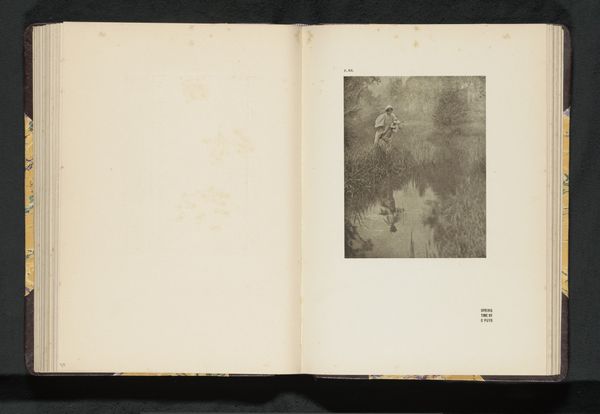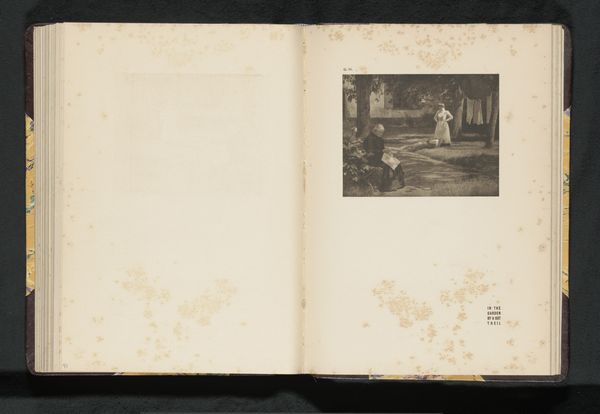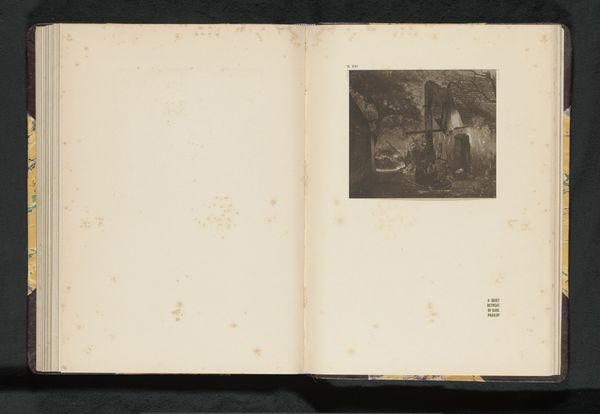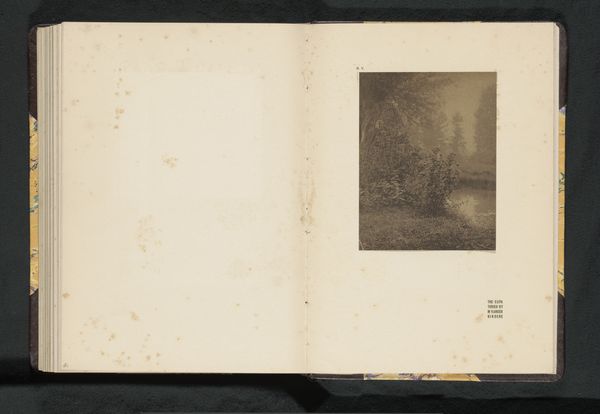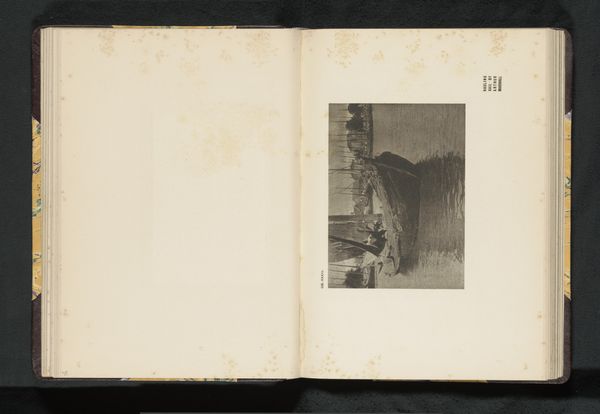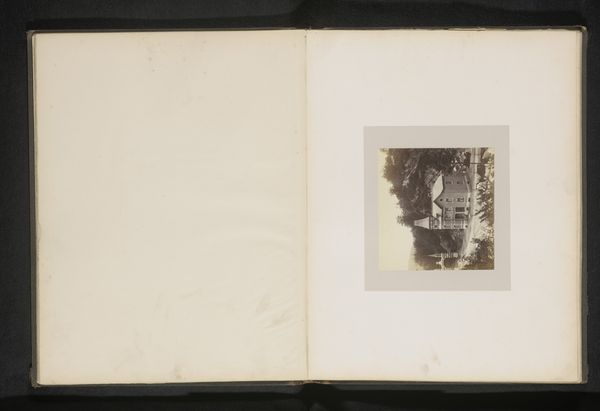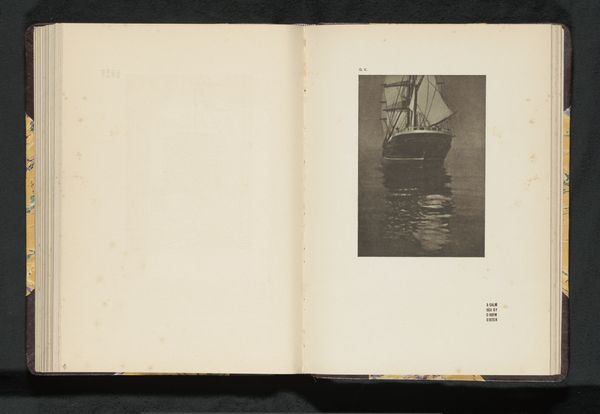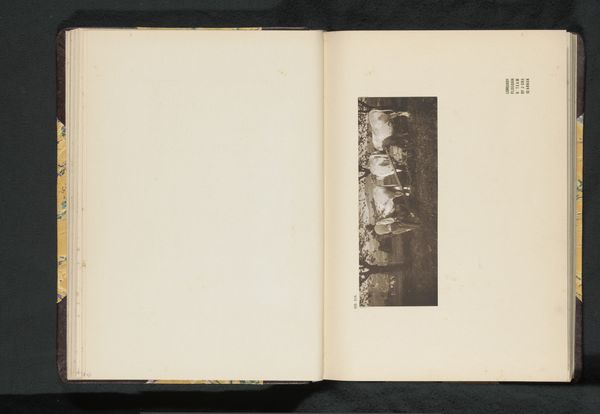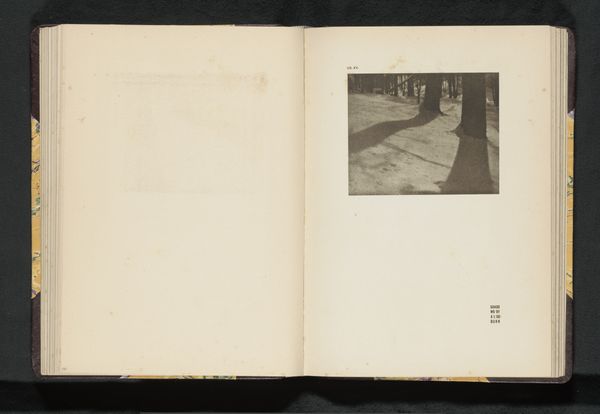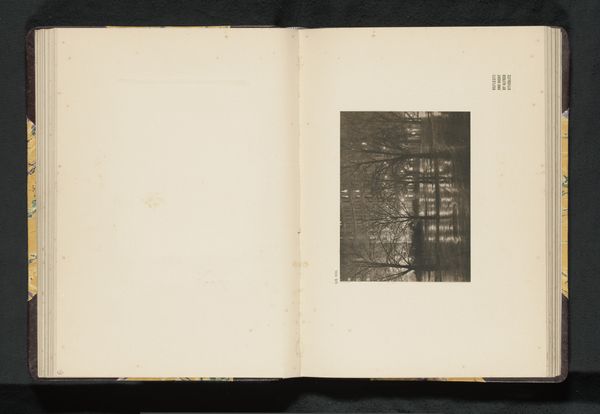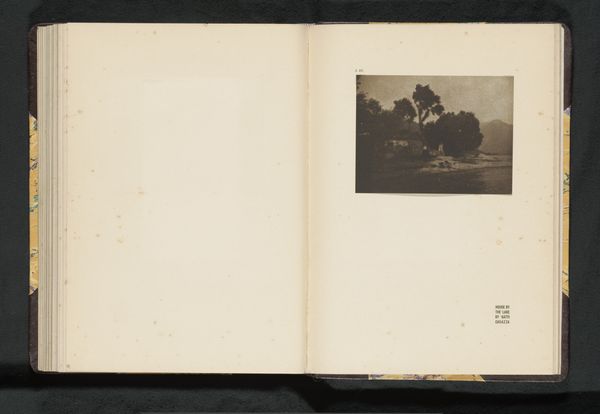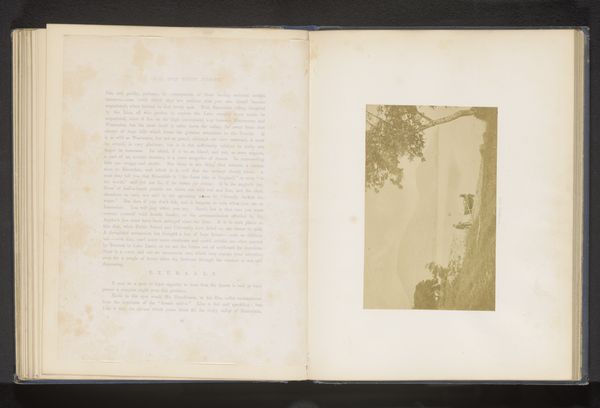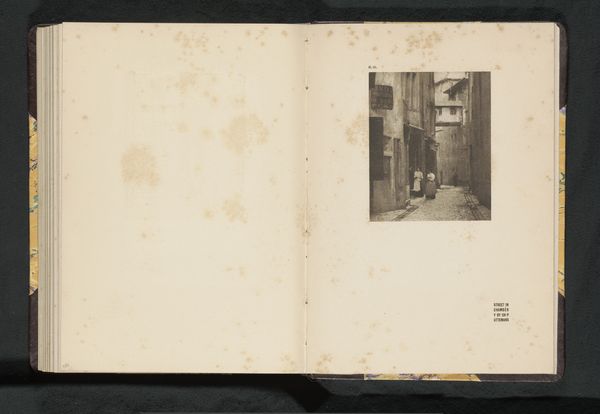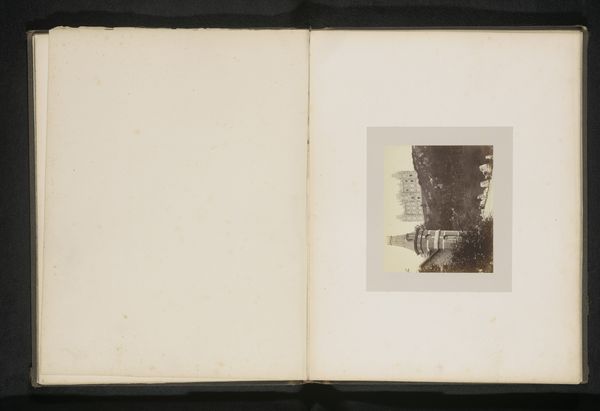
Dimensions: height 152 mm, width 75 mm
Copyright: Rijks Museum: Open Domain
Curator: Here we have a page from a photograph album featuring a silver gelatin print titled "Trappen in Wachau" by A. Löwy, predating 1905. What strikes you about it? Editor: The atmosphere is captivating; there's an intimacy to it, like stumbling upon a secret, hidden world. It feels almost timeless, that stone pathway worn smooth with history leading upwards. There’s an individual on the stairs too, wrapped in their thoughts. Curator: Indeed. Wachau is a valley in Austria, and Löwy captures a vernacular architecture steeped in social meaning. These stairways served not only as access routes, but also as gathering places, spaces of informal exchange within a closely-knit community. We must consider how class affected movement within such environments. Editor: And who had access? The angle certainly reinforces that, almost presenting the climb as something arduous. It feels class-based. There’s such depth in the print; it's far more than just a pretty view. I wonder about the perspective of the individual photographed, climbing or pausing for breath, either to enter a new space or looking down from another space and their story? Curator: Photography at this time often served to document social conditions alongside aesthetic aims. Löwy's choice to emphasize the steepness of the stairs, combined with the figure ascending them, could be seen as a comment on upward mobility, literally and metaphorically. Perhaps there were social commentaries in place regarding access. Editor: Yes, especially when presented as a fine art print for a relatively elite audience consuming these images within albums. Did this photographer seek to prompt a degree of empathy, or to further romanticize labour? The mood and composition contribute to a poignant sense of place, but one layered with questions. Curator: Analyzing its display within a bound album underscores the constructed nature of visual narratives. These images were deliberately curated, presented within a context intended to shape their reception and the collector's self-fashioning through such acquisition. Editor: So it's not simply a photograph of some stairs; it is loaded with narratives concerning class, labour, access, and display, with the act of consumption further cementing such notions. The very format invites the viewer to interpret it through an explicitly constructed, shaped gaze. Thank you, this opens further thoughts. Curator: Absolutely. These intersections make this early photograph more impactful. Thank you, and that makes us appreciate not just its artistry but also its societal implications.
Comments
No comments
Be the first to comment and join the conversation on the ultimate creative platform.
